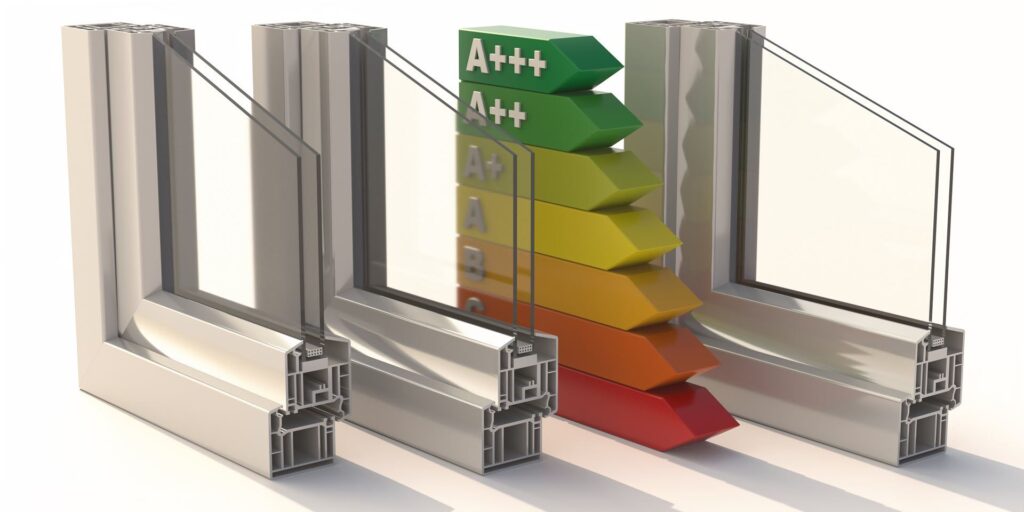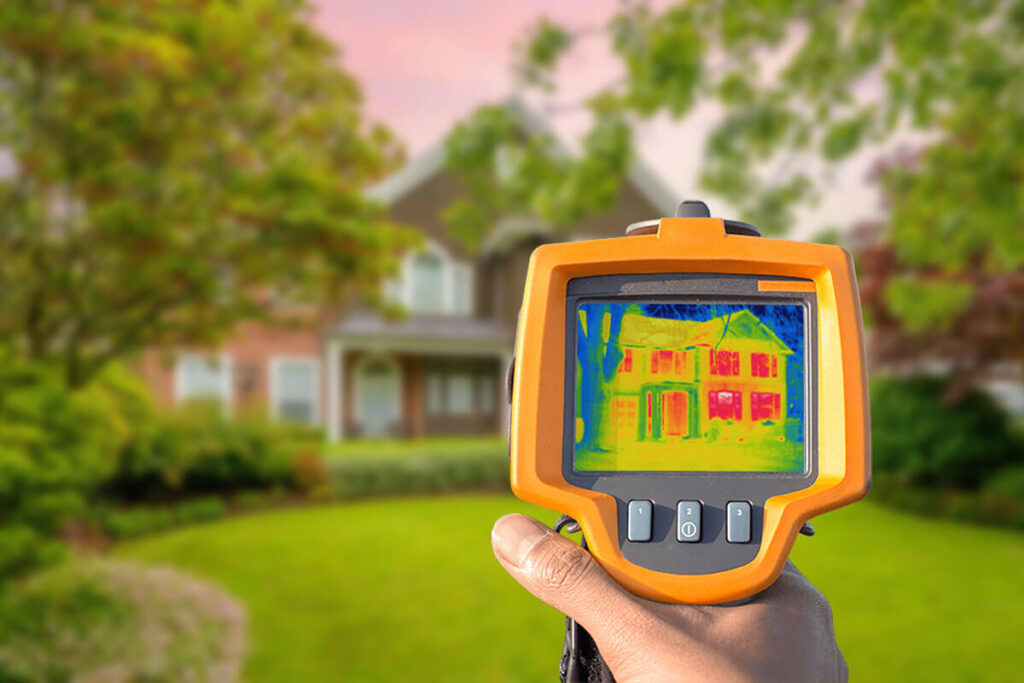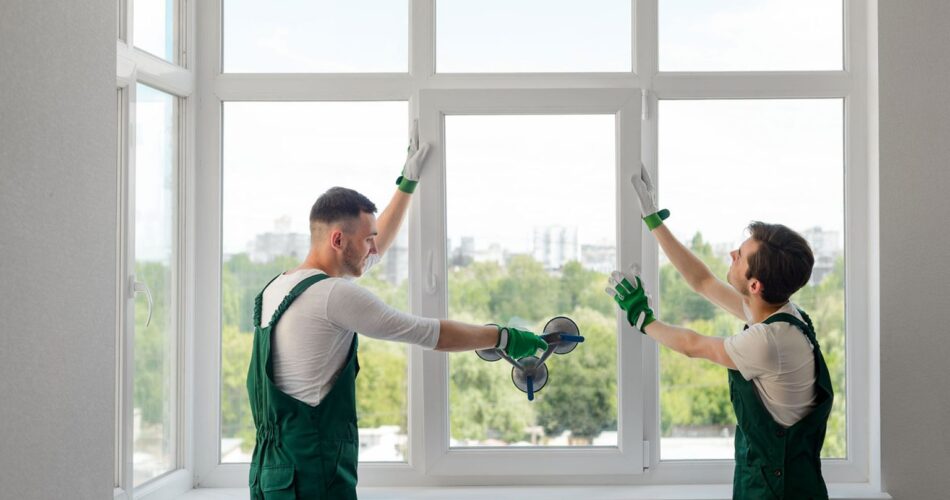Windows play a critical role in a home’s energy efficiency, impacting both heating and cooling costs. Over time, windows can become less effective at regulating indoor temperatures due to worn-out seals, damaged frames, or outdated materials. Fortunately, energy-efficient window repairs and upgrades can restore their functionality and help meet modern energy standards. This paper explores various strategies for improving the energy efficiency of existing windows, focusing on repairing common issues and upgrading components to reduce energy loss.

The Importance of Energy-Efficient Windows
Energy-efficient windows help maintain a comfortable indoor environment by minimizing heat loss in the winter and reducing heat gain in the summer. Inefficient windows can lead to higher energy bills, increased strain on heating and cooling systems, and discomfort due to drafts and temperature fluctuations. Key factors that influence a window’s energy performance include:
- Insulation: The ability of a window to resist heat flow (measured by R-value) and prevent air leakage.
- Glazing: The number of glass panes and coatings used to reflect or absorb heat.
- Frame Material: The material of the window frame, which affects durability and thermal performance.
- Sealing: Proper sealing around the window to prevent drafts and air leaks.
Energy-efficient repairs can enhance these factors, helping homeowners reduce energy consumption and lower their utility costs.
Common Energy Efficiency Issues in Older Windows
Older windows, or those in disrepair, often have several issues that contribute to energy inefficiency. Some of the most common problems include:
- Drafts and Air Leaks: Gaps or cracks in window frames and seals allow cold air to enter in the winter and warm air in the summer, leading to increased heating and cooling demands.
- Single-Pane Windows: Single-pane windows offer little insulation compared to double- or triple-pane windows, allowing significant heat transfer.
- Broken or Deteriorated Seals: In double- or triple-pane windows, the insulating gas between the panes can leak over time, reducing their thermal efficiency.
- Condensation Between Panes: Broken seals can lead to condensation between panes, reducing visibility and energy efficiency.
- Worn-Out Weatherstripping: Weatherstripping can degrade over time, leading to gaps where air can enter or escape.
- Outdated Frame Materials: Older wooden or aluminum frames may be prone to rot, warping, or conducting heat, making them less energy-efficient.

Energy-Efficient Window Repair Strategies
Restoring energy efficiency in windows often involves a combination of repairs and upgrades. Below are common repair techniques and solutions to improve window performance.
1. Sealing Drafts and Air Leaks
One of the most effective ways to improve energy efficiency is by sealing drafts and air leaks around windows. Air leaks account for a significant portion of energy loss, making it essential to address gaps in frames and sashes.
- Caulking: Applying caulk around the exterior of the window frame can seal cracks and gaps where air can escape. It is important to use weather-resistant caulk designed for outdoor use.Steps:
- Clean the area around the window to remove dirt and old caulk.
- Apply a new bead of caulk along the edges of the window frame.
- Smooth the caulk to ensure an airtight seal.
- Weatherstripping: Installing or replacing weatherstripping along the movable parts of the window helps prevent air leaks when the window is closed.Steps:
- Remove old or damaged weatherstripping.
- Measure and cut new weatherstripping to fit the window.
- Apply the weatherstripping around the sash to create a tight seal when the window is closed.
2. Insulating Window Frames
Window frames can be a source of significant heat transfer, particularly in older homes with wooden or aluminum frames. Insulating window frames can improve thermal performance and reduce energy loss.
- Foam Insulation: Expanding foam insulation can be applied in gaps around the window frame to prevent heat transfer through the walls.Steps:
- Remove trim or casing to access the gaps between the window frame and the wall.
- Spray foam insulation into the gaps, ensuring even coverage.
- Replace the trim or casing once the foam has fully expanded and hardened.
- Insulating Films: Applying insulating film to the glass surface can improve the window’s thermal performance without the need for complete replacement.Steps:
- Clean the glass surface thoroughly.
- Apply the insulating film to the interior side of the window.
- Use a hairdryer to smooth the film and create a tight seal.
3. Replacing Single-Pane Glass
Upgrading from single-pane windows to double- or triple-pane glass is one of the most effective ways to improve energy efficiency. Double- and triple-pane windows feature layers of glass with insulating gas (such as argon or krypton) between them, reducing heat transfer.
- Insulated Glass Units (IGUs): Replacing the glass in an existing window with an insulated glass unit (IGU) can significantly boost energy performance without requiring a full window replacement.Steps:
- Remove the old glass unit from the window frame.
- Install the new double- or triple-pane IGU in place of the old glass.
- Ensure the new unit is properly sealed to prevent air leaks and condensation.

4. Repairing or Replacing Broken Seals
In double- or triple-pane windows, the insulating gas between the panes can leak if the seals break down, leading to condensation between the panes and reduced efficiency. In some cases, the glass unit can be repaired, while in others, it may need to be replaced.
- Seal Repair: Some companies offer services to repair broken seals by resealing the panes and refilling the gas. However, this may not always restore full efficiency, so replacement is often recommended.
- Glass Replacement: Replacing the entire insulated glass unit (IGU) is typically the best solution for windows with broken seals.Steps:
- Remove the existing glass unit.
- Install a new IGU with intact seals and insulating gas.
- Seal the new unit to ensure proper thermal performance.
5. Applying Low-E Coatings
Low-emissivity (Low-E) coatings are a type of thin, transparent coating applied to the surface of window glass to reflect heat. These coatings help keep heat inside the home during winter and block heat from entering during summer.
- Benefits: Low-E coatings improve the energy efficiency of windows by reducing the amount of infrared and ultraviolet light that passes through the glass without sacrificing visibility.Steps:
- Consult a professional to apply Low-E coatings to existing windows.
- Alternatively, purchase replacement glass with built-in Low-E coatings.
6. Upgrading to Energy-Efficient Window Treatments
Window treatments such as insulated curtains, shades, or blinds can complement window repairs by adding an extra layer of insulation. These treatments help retain heat in the winter and block out solar heat in the summer.
- Insulated Curtains: Thick, insulated curtains trap air between the fabric and the window, creating a barrier that prevents heat loss.Steps:
- Install curtain rods above the windows.
- Hang insulated curtains and close them during the night to trap heat.
- Cellular Shades: Cellular (honeycomb) shades have air pockets that trap air, improving insulation around the windows.Steps:
- Measure and install cellular shades in windows that receive significant sun exposure.
- Close the shades during peak heat hours in summer or coldest times in winter to enhance energy efficiency.
Benefits of Energy-Efficient Window Repairs
Investing in energy-efficient window repairs offers numerous benefits for homeowners, including:
- Reduced Energy Bills: Improved insulation and reduced air leaks result in lower heating and cooling costs.
- Enhanced Comfort: Energy-efficient windows maintain a more consistent indoor temperature, reducing drafts and temperature fluctuations.
- Increased Home Value: Upgrading windows to meet modern energy standards can boost the resale value of a home.
- Lower Carbon Footprint: Reducing energy consumption helps minimize the home’s environmental impact, contributing to sustainability efforts.
- Improved Indoor Air Quality: Properly sealed windows prevent outdoor pollutants and allergens from entering the home.

Conclusion
Energy-efficient window repairs are a cost-effective way to improve the thermal performance of a home without requiring full window replacements. By addressing common issues such as drafts, air leaks, broken seals, and outdated glazing, homeowners can restore their windows’ functionality and enhance energy efficiency. Techniques such as sealing, insulating, upgrading to double-pane glass, and applying Low-E coatings can help meet modern energy standards, providing long-term savings on energy bills and a more comfortable living environment. In today’s eco-conscious world, repairing and upgrading windows is an essential step toward creating more energy-efficient, sustainable homes.

